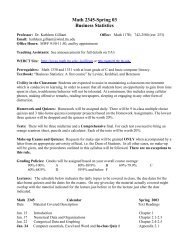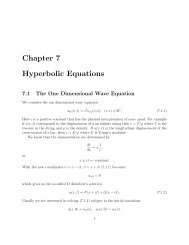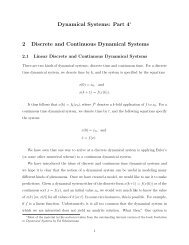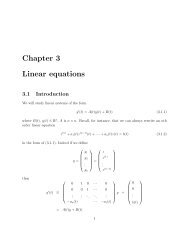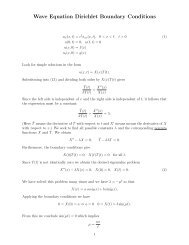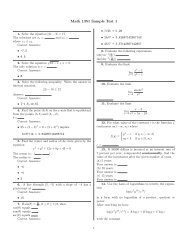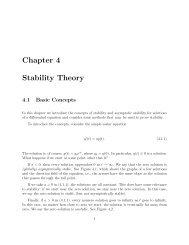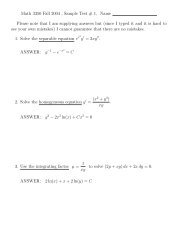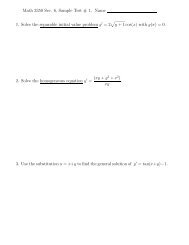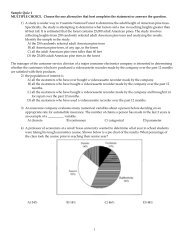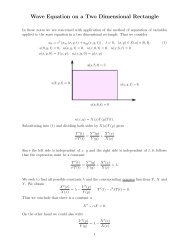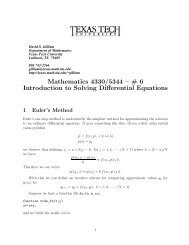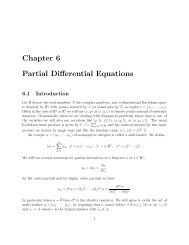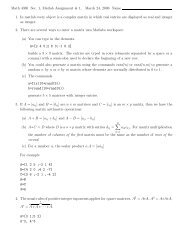6 Variational Methods
6 Variational Methods
6 Variational Methods
Create successful ePaper yourself
Turn your PDF publications into a flip-book with our unique Google optimized e-Paper software.
it is easy to see thatmaxλλ∣cosh(λ)∣ = |λ| 0cosh(λ 0 )where λ 0 is the positive root of the equationThus we haveand finallycosh(λ 0 ) − λ 0 sinh(λ 0 )=0.|b|−y(b, λ) ≥|b|−λcosh(λ) ≥|b|− 1sinh(λ 0 ) ,1, for all λ.sinh(λ 0 )So if b is chosen so that1|b|−sinh(λ 0 ) = B>0and y b is then chosen so that y b 0) and the final point is y(b) =0. We assume thatthe speed of travel in the particular medium is given at each point by c(x, y). Thendsc(x, y)dtwhere ds is incrmental arclength. Then the total time of travel is∫ b√1+(y′ )T =2 dx.0 c(x, y)Since the particle is at rest at height y 0 , and since the potential plus kenetic energies is a constant,the speed at height y is c = √ 2g(y 0 − y) where g is the gravitational constant.Put another way, if s represents distance on the curve y = y(x) measured from (0,y 0 ), thendsdt = vwhere t represents time and v is the velocity of the particle. Since the motion, by assumption, isfrictionless with initial velocity v 0 =0and is influenced only by gravity, the principle of conservationof energy implies12 mv2 = mg(y 0 − y)8



